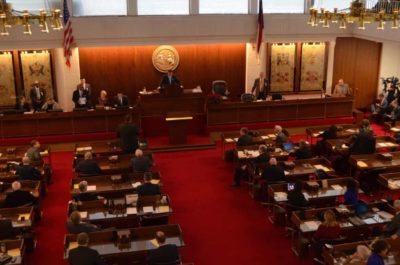Last week at Hall Fletcher Elementary School in Asheville, Adama Dembele sat at his drums, bordered on either side by eager students ready to start pounding on their instruments.
The students belong to Erica Adelman’s second grade class, and as they sat in anticipation, Adelman asked one of her students to explain what she’s learned about science through drumming.
This is what the student said:
Dembele, who hails from West Africa, came into the school as part of a grant from the Asheville City Schools Foundation called a TAPAS (Teaching Artists Presenting in Asheville Schools) grant. This particular grant program started in 2011.
“What TAPAS does is it helps teachers to bring in local artists who are highly trained to use their creativity to help support curriculum teaching,” said Miranda Musiker, Grant and Scholarship Programs Manager for ACSF.
Since it started, this particular grant program has had an effect on more than 7,000 students, trained 50 artists, and provided more than 800 days of artists-in-residence for area schools.
ACSF itself has existed for more than 25 years and works with the communities to help support teachers in Asheville.
These grants help teachers to feel like professionals, according to ACSF Executive Director Kate Pett.
“They identify problems they’re working on, resources they need, and then they get to work with colleagues and professional teams to address problems,” she said.
Pett sees the ACSF as helping with an issue that faces many schools across the state: teacher retention.
“I think that the teaching profession is facing a real challenge. Our younger and younger workforce has different expectations for working conditions. They expect flexibility. They expect ongoing professional development. They expect change, adaptability, on the job training,” Pett said. “These are challenges to the traditional structure of public education and the teaching profession that we have to figure out a way to address. And grants can help do that.”
Last year alone, ACSF spent more than $164,000 on grant funding, impacting 238 teachers and more than 2,300 students.
Last week, I visited Hall Fletcher Elementary to see three classrooms where ACSF grants were having an impact. Each classroom was taking advantage of a different grant: TAPAS, Innovation, or Fellows Grant.
“These grants provide to us material resources that we may not have the money to obtain, or we may not have the resources to even get our hands on those resources,” said Hall Fletcher Principal Cynthia Sellinger.
The first classroom we visited was one utilizing a Fellows Grant from ACSF. The grant was a STEAM grant. STEAM stands for Science, Technology, Engineering, Art, and Math.
The first-grade class, led by teacher Michele Corral, took place in a MakerSpace, which has all sorts of equipment students can use to make things with the STEAM knowledge they are gaining through their curriculum.
“This grant really allowed us to get the materials that were needed in order to let our students to be innovators and makers, and use their imaginations to create,” said Darcy Grimes, a teacher at the school and NC’s 2012 Teacher of the Year.
“We’re just so excited to be able to have our students utilize such awesome tools,” Corral said.
In the classroom was a 3D printer, virtual reality glasses, and more. One student explained with the help of her teacher a project she had worked on involving the moon.
The class was able to get from NASA a pattern of the moon’s surface that, when printed out on the 3D printer, allowed students to feel and see the texture of the moon’s surface.
Here is the 3D printer hard at work on another project.
Next we moved on to the drum demonstration I mentioned earlier. I’ll save the words and just show you a little of what we saw.
Finally, we ended up in Shelley Haney’s kindergarten class where we saw the fruits of an Innovation Grant from ACSF.
In this particular classroom, the teacher was using the grant to help bridge the technology knowledge gap. Musiker explained that children come in with different levels of knowledge and experience with technology. One child can know a lot about, for example, using an iPad for learning, whereas another may have limited experience.
Students in Haney’s class were using a program called Osmo, which operated on an iPad. The program enables them to play learning games. I watched them play a game where they stacked up numbers at the base of the iPad in order to match the numbers being displayed on the screen. Check out a demonstration here:
And here is one of the students explaining how she has used Osmo.
Haney said that since starting to use Osmo, the kid’s engagement level has gone up.
“It’s been awesome to see their excitement about learning,” she said.
The work of ACSF bolsters what administrators and teachers are already doing in the classroom, and it’s clear from talking to them that the Hall Fletcher school personnel are grateful.
At the beginning of the tour, Principal Sellinger told representatives from ACSF just what their involvement in the school has meant to her.
“I just cannot stress the positive experiences that our students get from what you are bringing into our school,” she said.



